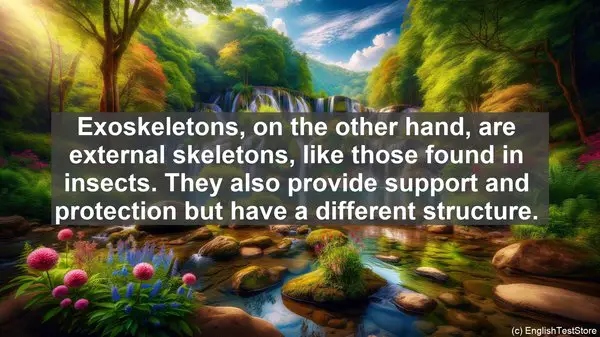Introduction
Welcome to our evolutionary botany class. Today, we’ll be diving into the world of words. While they may seem simple, words can often be the source of confusion and misunderstanding. In the realm of evolutionary botany, this is no different. So, let’s get started with our list of the top 10 commonly confused words.
1. Adaptation vs. Acclimation
The first pair of words that often perplexes students is ‘adaptation’ and ‘acclimation.’ While both involve an organism’s response to its environment, there’s a crucial difference. Adaptation refers to a genetic change that occurs over generations, enabling a species to better survive. On the other hand, acclimation is a reversible, short-term adjustment in an individual’s physiology or behavior. So, adaptation is long-term and genetic, while acclimation is short-term and reversible.

2. Homology vs. Analogy
When studying the similarities between different species, ‘homology’ and ‘analogy’ come into play. Homology refers to traits that are similar due to a shared ancestry. For example, the forelimbs of humans, bats, and whales all have the same basic structure, indicating a common ancestor. On the other hand, analogy refers to traits that are similar due to convergent evolution. An example is the wings of birds and insects. While they serve the same purpose, they have different underlying structures and evolved independently.
3. Speciation vs. Divergence
Next, we have ‘speciation’ and ‘divergence.’ Speciation is the process by which new species are formed. It occurs when a population becomes reproductively isolated and evolves independently. Divergence, on the other hand, refers to the accumulation of differences between populations of the same species. So, speciation is about the formation of new species, while divergence is about the differences within a species.
4. Pollination vs. Fertilization
In the world of plants, ‘pollination’ and ‘fertilization’ are often confused. Pollination is the transfer of pollen from the male part of a flower to the female part. It can occur through various means, such as wind, water, or animals. Fertilization, on the other hand, is the fusion of the male and female gametes, resulting in the formation of a seed. So, pollination is about the transfer of pollen, while fertilization is about the union of gametes.

5. Gymnosperm vs. Angiosperm
Moving on, we have ‘gymnosperm’ and ‘angiosperm.’ These terms refer to two major groups of plants. Gymnosperms are plants that produce seeds without enclosing them in a fruit. Think of conifers, like pine trees. Angiosperms, on the other hand, are plants that produce seeds enclosed in a fruit. The majority of plants we encounter, from flowers to fruits, are angiosperms. So, the key difference is the presence or absence of a fruit.
6. Phloem vs. Xylem
When it comes to plant tissues, ‘phloem’ and ‘xylem’ are often mixed up. Phloem is responsible for the transport of sugars, nutrients, and hormones throughout the plant. It’s like the plant’s circulatory system. Xylem, on the other hand, is responsible for the transport of water and minerals from the roots to the rest of the plant. So, phloem is about the transport of sugars, while xylem is about the transport of water and minerals.
7. Monocot vs. Dicot
Another pair of terms that can be confusing is ‘monocot’ and ‘dicot.’ These are two major groups of flowering plants. Monocots, as the name suggests, have a single cotyledon or seed leaf. Examples include grasses and lilies. Dicots, on the other hand, have two cotyledons. Examples include roses and sunflowers. So, the number of cotyledons is the key distinguishing factor.
8. Endoskeleton vs. Exoskeleton
Let’s now shift our focus to animal anatomy. ‘Endoskeleton’ and ‘exoskeleton’ refer to the structural support systems in animals. Endoskeletons are internal skeletons, like the ones we have. They provide support, protect vital organs, and allow for movement. Exoskeletons, on the other hand, are external skeletons, like those found in insects. They also provide support and protection but have a different structure. So, the key difference is the location, internal or external.
9. Hibernation vs. Estivation
When it comes to periods of inactivity, ‘hibernation’ and ‘estivation’ are often used interchangeably. However, there’s a distinction. Hibernation is a state of reduced activity, usually during winter, to conserve energy. Many mammals, like bears, hibernate. Estivation, on the other hand, is a state of reduced activity, usually during hot and dry periods, to avoid harsh conditions. Some amphibians and reptiles estivate. So, hibernation is about winter dormancy, while estivation is about summer dormancy.
10. Migration vs. Dispersal
Lastly, we have ‘migration’ and ‘dispersal.’ While both involve the movement of individuals, there’s a difference in purpose. Migration is a regular, often seasonal, movement from one region to another, usually for breeding or finding resources. Think of birds flying south for the winter. Dispersal, on the other hand, is a one-time movement of individuals away from their birthplace, often to establish new populations. So, migration is about regular movement, while dispersal is about one-time movement.
